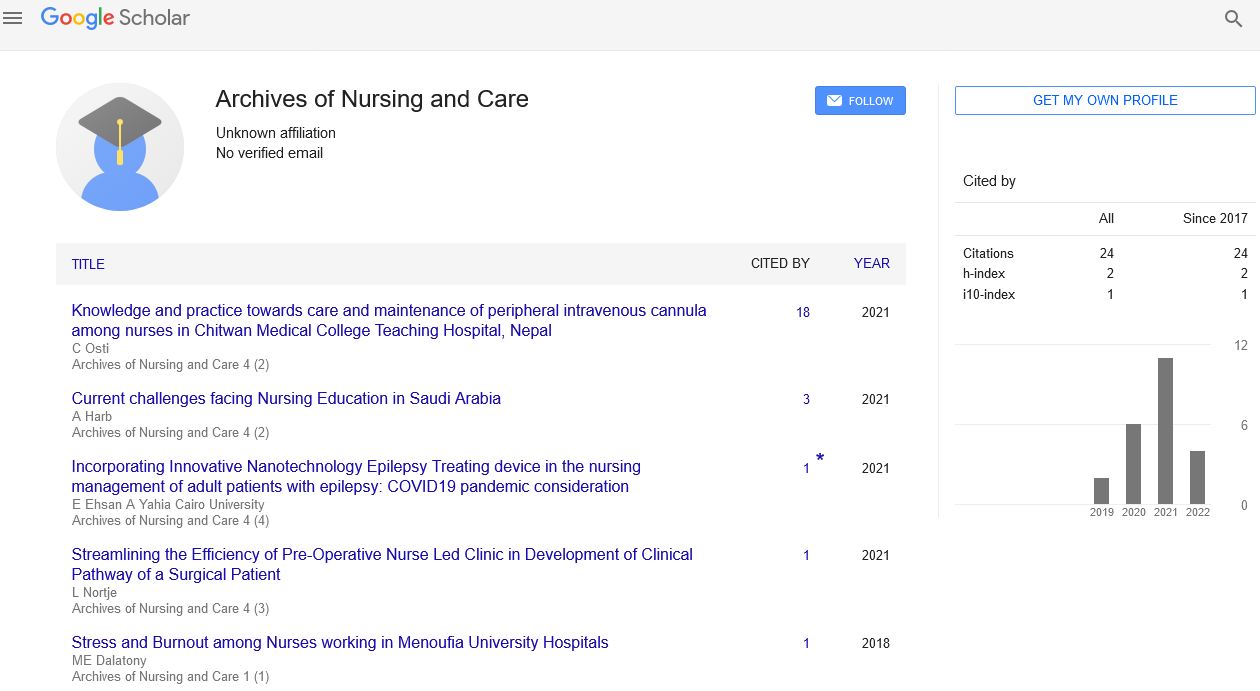Commentary - Archives of Nursing and Care (2022) Volume 5, Issue 6
A Note on the Usage of Prophylactic Anticonvulsants in Patients with Brain Tumours
J. Perry*
James Perry, c/o Karen Spithoff, Cancer Care Ontario Program in Evidence-Based Care, McMaster University, Courthouse T-27, 3rd Floor, Room 319,1280 Main Street West, Hamilton, Ontario L8S 4L8
James Perry, c/o Karen Spithoff, Cancer Care Ontario Program in Evidence-Based Care, McMaster University, Courthouse T-27, 3rd Floor, Room 319,1280 Main Street West, Hamilton, Ontario L8S 4L8
E-mail: spithokd@mcmaster.c
Received: 02-May-2022, Manuscript No. oanc-22-55014; Editor assigned: 03-May-2022, PreQC No. oanc-22- 55014(PQ); Reviewed: 16-May-2022, QC No.oanc-22-55014; Revised: 23- May-2022, Manuscript No. oanc-22- 55014(R); Published: 30-May-2022, DOI: 10.37532/oanc.2022.5(6).56-57
Abstract
Patients with primary or metastatic brain tumours who have never had a seizure still have a 20% risk of experiencing a seizure over the course of their disease. Because considerable practice variation exists in regard to the management of patients with brain tumours who have never had a seizure, and because conflicting evidence has been reported, the Neurooncology Disease Site Group (DSG) of Cancer Care Ontario’s Program in Evidence-based Care felt that a systematic review of the evidence was warranted. The present systematic review was reviewed and approved by the Neuro-oncology DSG, which comprises medical and radiation oncologists, surgeons, neurologists, a nurse, and a patient representative
Keywords
haemorrhagic • tumours glioblastoma • anticonvulsant • brain tumours
Introduction
Approximately 25% of patients with newly diagnosed primary or secondary brain tumours have seizures as a presenting symptom. Seizures may be more common in patients with low-grade infiltrative tumours, tumours near the motor cortex, and haemorrhagic tumours [1]. If seizures have not occurred at presentation, a 20% risk of having a seizure at some point during the course of the disease remains. Seizures are an important determinant of quality of life in these patients. Seizures threaten independence, may cause injury or loss of motor function, may necessitate hospitalization, and increase the need for higher-dose or additional anticonvulsants, with increased adverse effects [2]. Even in patients with no active seizures, the fear of seizures affects patient well-being and increases caregiver stress. Best practices for the appropriate use of anticonvulsants in these patients have not been established. Clearly, there is a role for anticonvulsants in patients with known seizures and in craniotomy patients in general as prophylaxis during the perioperative period, but the role of long-term prophylactic anticonvulsants for patients without a history of seizures is not as clear [3]. Furthermore, practice varies considerably in the management of patients who are prescribed anticonvulsants during the perioperative period and who then remain on this treatment during follow-up.
However, because of these differences in patient management, the Neuro-oncology DSG felt that a systematic review of the evidence was warranted as the basis for a practice guideline to be disseminated to Ontario practitioners.
Description
A systematic search was conducted of the MEDLINE (1966 to June 2005) and Cochrane Library (Issue 2, 2005) databases using “anticonvulsant” [Medical Subject Heading] or “antiepileptic drugs” combined with the keywords “glioma,” “glioblastoma,” and “brain tumours.” These terms were then combined with the search terms for the following study designs: practice guidelines, systematic reviews, metaanalyses, reviews, randomized controlled trials (RCTs), controlled clinical trials, and retrospective studies [4]. The Canadian Medical Association InfoBase (www.cma.ca/ cpgs/index.asp), the National Guidelines Clearinghouse (www.guideline. gov), and other Web sites were also searched for existing evidence-based practice guidelines. Relevant articles and abstracts were selected and reviewed by three reviewers, and the reference lists from those sources were searched for additional trials, as were the reference lists from relevant review articles.
Combining data in this manner assumes a constant hazard ratio of risk for the groups being compared. Results are expressed as relative risk (RR, also known as “risk ratio”) with a 95% confidence interval (CI), where an RR less than 1 for incidence of seizures indicates fewer seizures in the experimental group. Conversely, an RR greater than 1 suggests that patients in the control group experienced fewer seizures [5]. The RR is calculated using the ratio of the proportion of patients in the experimental treatment group who had a seizure to the proportion of patients in the control group who had a seizure. The random effects model, being the more conservative estimate of effect, was used in preference to the fixed-effects model for pooling across studies.
Acknowledgement
None
Conflict of interest
No conflict of interest
References
- Franceschetti S, Binelli S, Casazza M et al. Influence of surgery and antiepileptic drugs on seizures symptomatic of cerebral tumours. Acta Neurochir (Wein) .103:47–51(1990).
- Moots PL, Maciunas RJ, Eisert DR et al. The course of seizure disorders in patients with malignant gliomas. Arch Neurol.7–24(1995).
- Brouwers MC, Chambers A, Perry J et al Neuro-oncology Disease Site Group. Can surveying practitioners about their practices help identify priority clinical practice guideline topics? BMC Health Serv Res 3:23(2003).
- Browman GP, Levine MN, Mohide EA et al. The practice guidelines development cycle: a conceptual tool for practice guidelines development and implementation. J Clin Oncol .13:502–12(1995).
- Lee ST, Lui TN, Chang CN et al. Prophylactic anticonvulsants for prevention of immediate and early postcraniotomy seizures. Surg Neurol . 31:361–4(1989).

